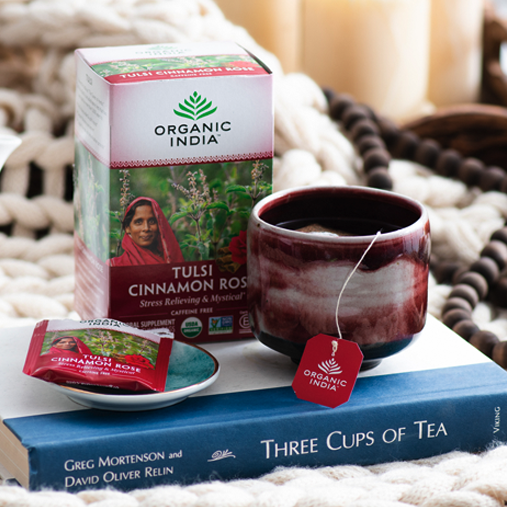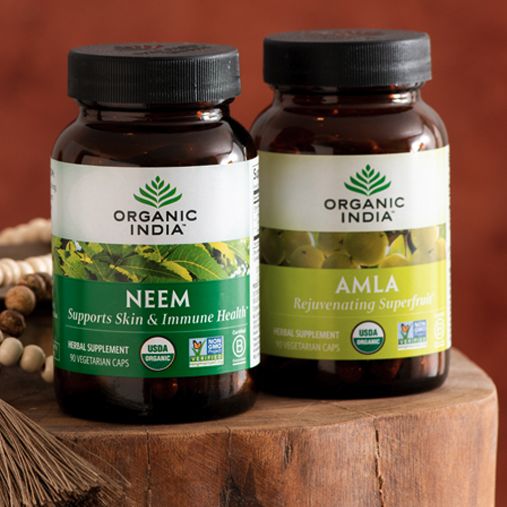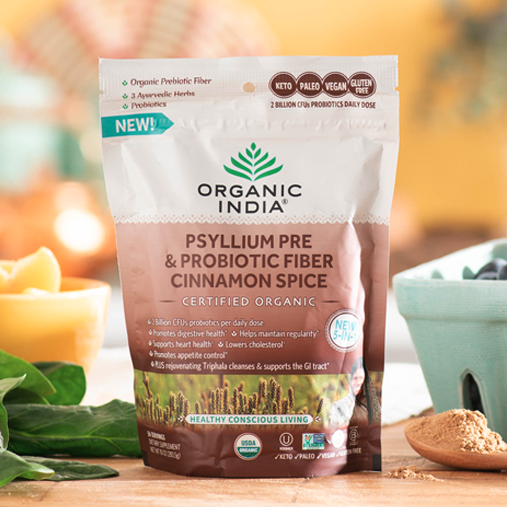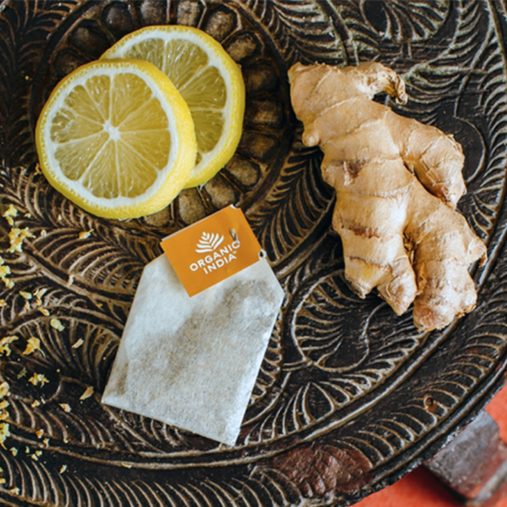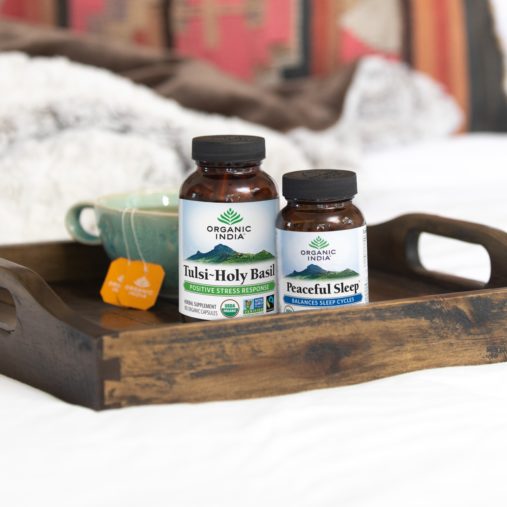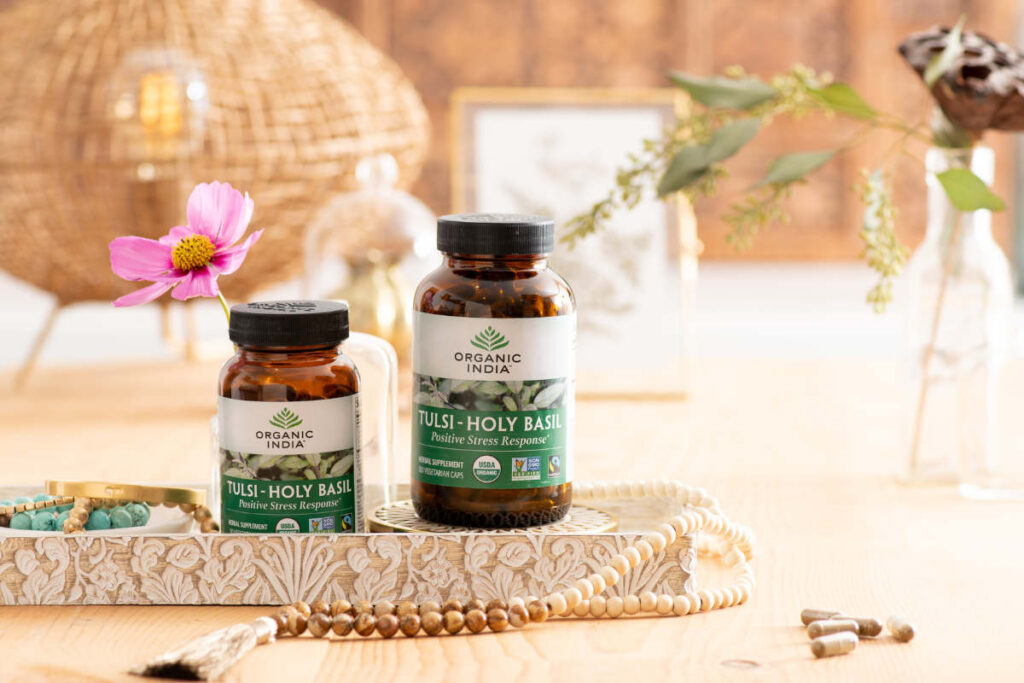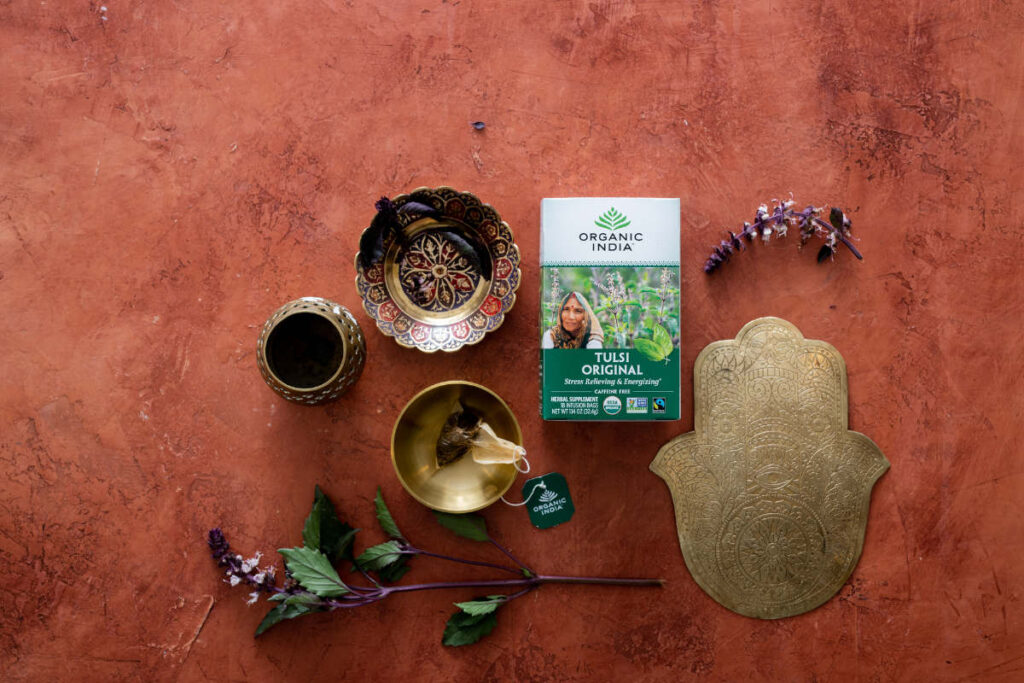Tulsi, also known as Holy Basil, is an adaptogenic herb bursting with health benefits. In Ayurveda, the herb is venerated as the Queen of Herbs and it is one of the most common household plants in India. With its pleasant earthy, floral and peppery flavor and its ability to relieve stress, uplift mood, modulate immune function and detoxify the gut, it’s no wonder this herb is finding its way into home gardens around the globe.
If you’re wondering how to grow Tulsi and make this beautiful plant a regular resident of your garden, read on! When ready to harvest, Tulsi leaves are most commonly used in teas and infusions to reap maximum spiritual, emotional, physical and cognitive benefits.
Jump ahead:
- FAQ
- Is Tulsi easy to grow?
- Does Tulsi need direct sunlight?
- What kind of soil does Tulsi need?
- How big does Tulsi grow?
- Can I grow Tulsi indoors?
- What kind of Tulsi should I grow?
- Where to find Tulsi seeds?
- Step by Step How to Grow Tulsi
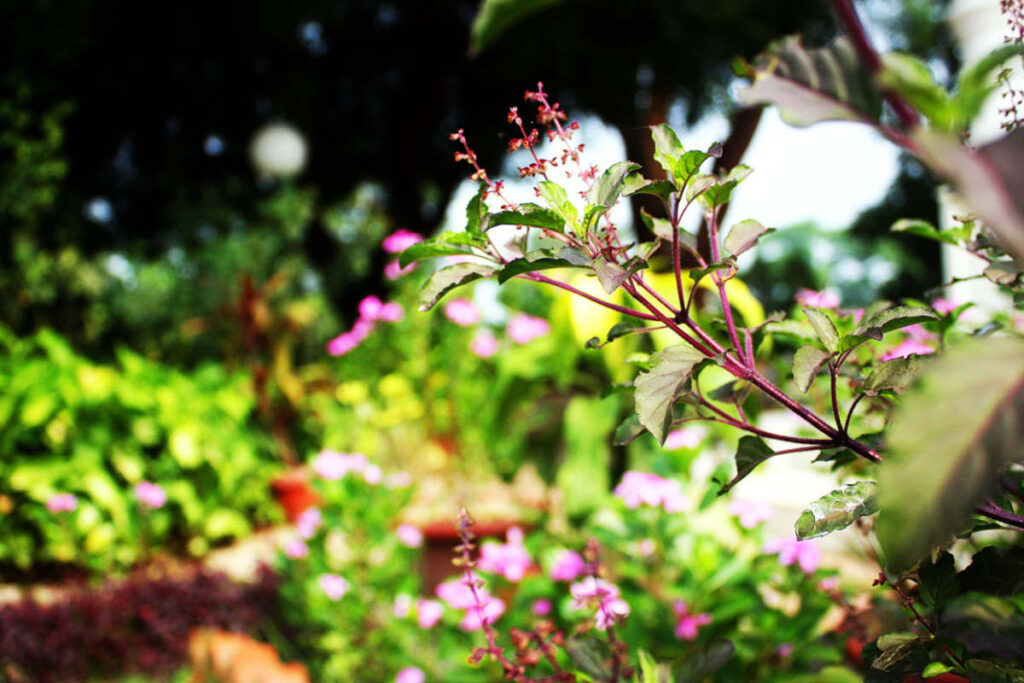
FAQ
Browse these top questions gardeners seasoned and novice often ask when adding Tulsi to their fresh herb collection.
Is Tulsi easy to grow?
Like most other types of basil, Tulsi is relatively easy to grow in a garden, but should be grown in areas that have constantly warm temperatures and never frost. The plant grows year-round in hardiness zone 10 and 11, which, in the United States, includes southern Florida, southern California, Puerto Rico and Hawaii. However, Tulsi can be grown annually anywhere in the country during the hot summer months or indoors.
Does Tulsi need direct sunlight?
Yes, Tulsi needs direct sunlight. Ideally Holy Basil should receive 6-8 hours of sunlight per day to thrive, but if that is not possible it can survive with as little as 4 hours of sunlight daily. That being said, Tulsi can be sensitive to scorching afternoon sun beating down on it for hours on end, so it’s best to have it partially shaded during the heat of the day.
What kind of soil does Tulsi need?
Tulsi thrives in porous, aerated soil that is loamy and fertile with a pH of 6-7.5 and good drainage.
How big does Tulsi grow?
In gardens with optimal temperatures and soil conditions, Tulsi bushes can grow to 4 or 5 feet; as they are often found in India. When grown indoors or in more temperate climates, Tulsi will grow about 1 to 2 feet.
Can I grow Tulsi indoors?
Yes, Tulsi can be grown indoors year round as long as it gets a minimum of 4 hours of direct sunlight. Place in a warm sunny, south-facing windowsill or solarium for best results.
What kind of Tulsi should I grow?
There are an impressive 108 varieties of Tulsi that grow in India, so it may be difficult to decide which type to grow in your little garden on the other side of the globe. There are three varieties that are most commonly grown for their health benefits: Rama, Vana and Krishna.
- Rama would be the most common Tulsi houseplant, with a broader green leaf and milder scent and flavor
- Krishna is a bit more difficult to find and bears purple leaves when mature and has a spicier scent
- Vana is considered the most beneficial of all Tulsi varieties, with light and dark green leaves and a tasty, fragrant aroma.
- Any of these (or all three!) will grow beautifully in a home garden.
There are 108 varieties of Tulsi in India. A fascinating parallel is that 108 is also the number of spiritual completion and creation in Yogic philosophy and Vedic cosmology, respectively.
Where to find Tulsi seeds?
Tulsi can be found at select nurseries in your area, as well as online from reputable seed suppliers like Strictly Medicinal Seeds. Opt for organic seeds for highest quality and efficacy, especially if you’re planning to consume in teas and infusions.

How to Grow Tulsi
Learn how to grow Tulsi from seed with this step-by-step guide.
1. Supplies
To start, you will need Tulsi seeds, a flowerpot with drainage, and high quality organic potting soil. Whether you plan to keep your Tulsi plant inside or outside, it is best to start growing your plant inside to protect delicate seedlings from the elements.
2. Pot Prep
Fill a pot with potting soil, leaving around an inch of space at the top. Water the soil thoroughly so that it is moist throughout, but not waterlogged.
3. Sowing
Sprinkle the tiny Tulsi seeds on the surface of the moist soil and gently press them about ¼ inch below the surface of the soil with your fingers.
4. Germination
Soil should be kept moist during the germination period, which typically lasts 1-2 weeks to see the plant begin to sprout. Be sure to water very gently or with a spray bottle to not disturb the seeds. During this period, it can help to wrap the top of the pot with plastic wrap to retain moisture and warmth.
5. Sunlight
Keep the plant by a warm, sunny window where it can receive a minimum of 4 hours of direct and indirect sunlight per day – but ideally 6-8 hours – and watch your sacred Tulsi grow! If temperatures drop at night, be sure it’s not getting the chill from open windows or doors.
6. Watering
After the germination period, your plant should be checked at least 2 times a week to see if it needs watering. It should be watered whenever the top layer of soil becomes dry. Exact frequency of watering can vary based on climate.
7. Fertilizing
When it comes to how to grow Tulsi, it’s important to now that this herb requires fertile soil to flourish. Every couple months, fertilize with compost or a balanced 10-10-10 liquid fertilizer.
8. Repotting
It’s time to repot into a larger container when the roots start growing out of the drainage holes at the bottom of the pot. When this happens, prepare a larger pot with fresh quality organic potting soil and gently remove the plant from its current vessel, loosen the roots and replant in a larger vessel. You don’t want to pack the soil too tightly, just enough to support the plant and hold the roots in place.
- Transferring Outdoors. Alternatively, you can transfer the plant outdoors into your garden by preparing the soil with compost and organic gardening soil. Dig a hole deep enough to nestle the plant’s root system and gently replant.
9. Pruning
You do not need to prune your Tulsi plant until it reaches about 6 inches in height. When it reaches this height, it’s a good idea to prune frequently so that it becomes lush, bushy and leafy, rather than tall and weak. When pruning, be sure not to remove more than half of each stem. Pinch off the top of each stem when there are 4-6 pairs of leaves. The more you prune, the bushier it will become. Of course be sure to use the Tulsi leaves you pruned off by drying for tea or using in recipes.
10. Harvesting
You can start harvesting small amounts of Tulsi approximately four months after it began to sprout, or when it’s 6-8 inches in height. To do so, use a sharp knife or garden shears to cut just above the leaf node of the second or third set of true leaves. This will allow the plant to continue to grow and become bushier and fuller. If taken care of properly, a Tulsi plant can be harvested 4-6 times during a summer growing season.
11. Maintenance
Maintain your Holy Basil plant with plenty of sunlight, watering and fertilizing as outlined above – as well as proper pruning and harvesting techniques. And don’t forget to add some love and gratitude to your sacred little Tulsi plant for added encouragement.
12. Regenerative Gardening Practices
To take your organic Tulsi garden to the next level, implement Regenerative gardening techniques. Use our helpful resources: A Guide to Regenerative Gardening at Home and Gardening by the Moon to have a home garden in perfect harmony with the rhythms of nature.
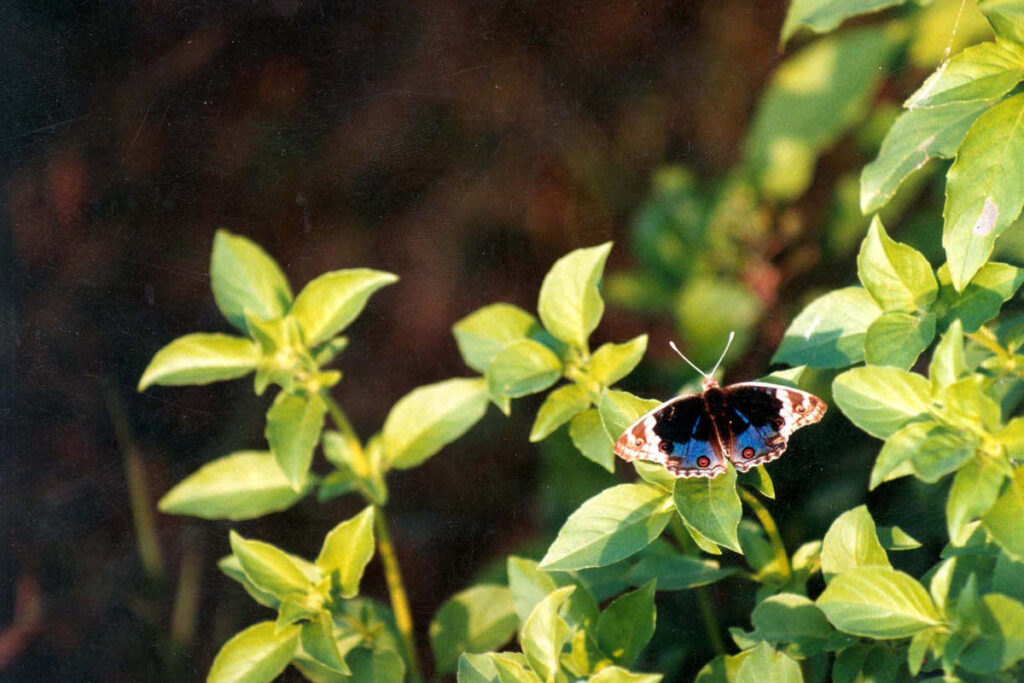
If growing is not an option this season, but you’d still like to the enjoy the deep benefits of Tulsi, ORGANIC INDIA Tulsi Teas and Tulsi Supplements contain 100% Organic, Non-GMO, Fairtrade Tulsi grown on small family farms in India and dried/packaged in the company’s LEED Platinum Certified manufacturing facility. We do not add any fillers, artificial flavors, colors, or preservatives to any of our products; maintaining herbal potency, integrity and sanctity.
